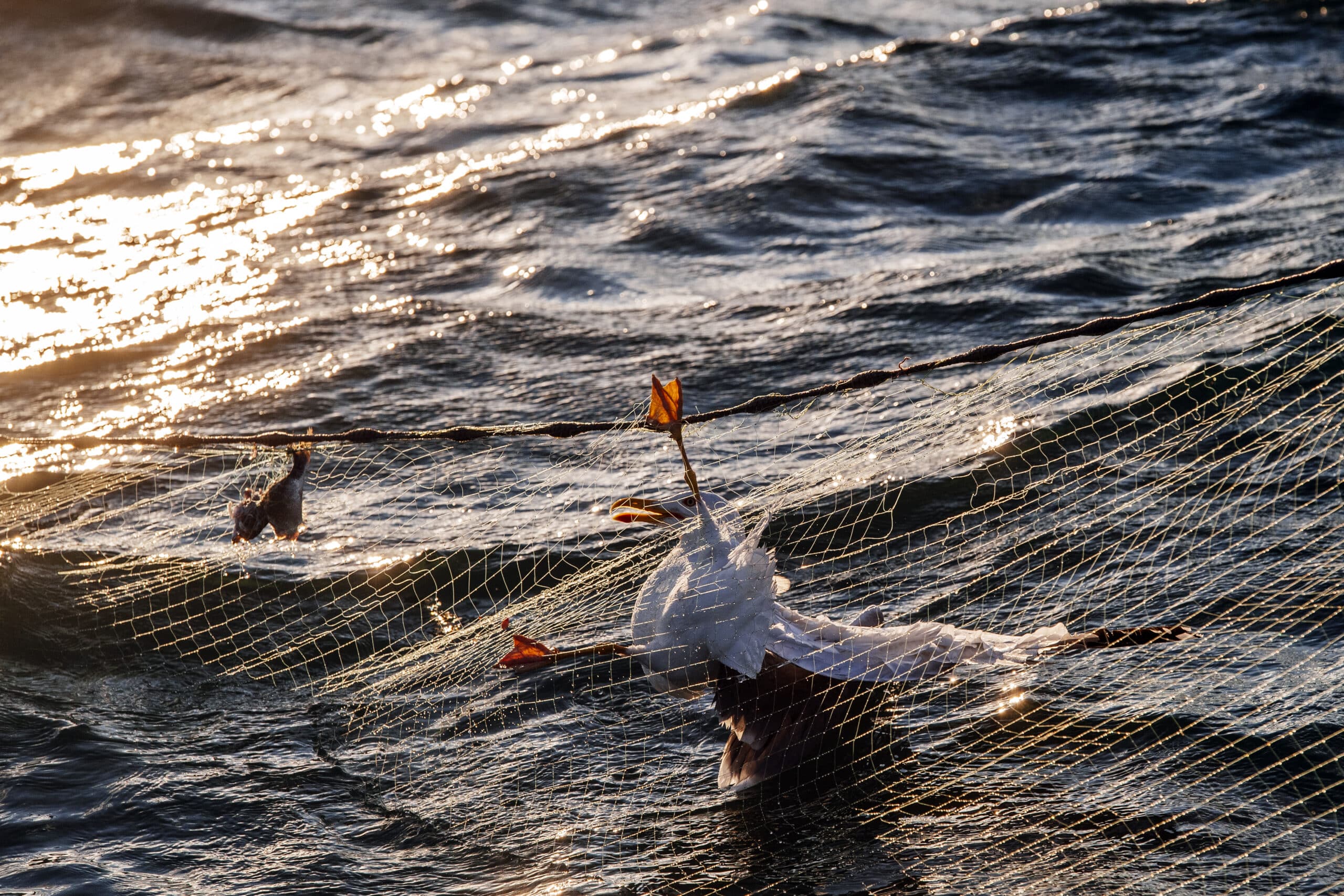Many of the challenges we face in conservation are complex, but every now and then we can find a simple solution. A case in point is seabird bycatch, one of the largest threats to the world’s most endangered group of birds, which can be prevented by something as simple as a kid’s toy. And you can help!
Every year in European waters alone, 200,000 seabirds die caught in fishing nets, lines, and hooks – in fact, seabird bycatch is one of the major threats to seabirds worldwide. Attracted by fish and bait, birds like cormorants, gannets, and shearwaters dive for an ‘easy meal’ and get caught by accident. At the Portuguese Society for the Study of Birds (SPEA/BirdLife Portugal), we have been working on this subject for more than 10 years now. In the beginning, we started to characterize the problem along the Portuguese coast, interviewing fishermen and going on board the fishing vessels to better understand which were the species most commonly caught and which fishing gear poses a bigger threat. After years of monitoring, we gathered an in-depth understanding of the seabird bycatch – which birds were caught, when in the season, and how. The numbers were alarming! Around a unique group of islands in Portugal – the Berlengas archipelago – we estimated that almost 20,000 Northern gannets are annually captured in fishing gear.

Yellow-legged gull caught in a fishing net. Picture credits: Stipe Surac
With all that information gathered we started thinking of solutions – practical mitigation measures that could be adopted by fishermen, reducing bycatch and at the same time, not impacting their fish catch. We searched for tried and tested methods around the globe, spoke with colleagues and fishermen alike, and tried multiple gadgets, but most of all we learned from common mistakes. And then one fine day, we saw this kite shaped like a bird of prey at an agriculture field to scare away the birds and had our Eureka moment! If it works on land, why not test this at sea?
Fishermen don’t want to catch birds. To them, seabird bycatch means damaged gear, time wasted untangling birds, and less fish – every hook with a bird, is one less hook with fish on it. Working together with Portuguese fishermen, conservationists at SPEA have found an effective, easy-to-deploy solution: the ‘scary-bird’ kite. As the kite is shaped like a bird of prey and flutters in the wind, seabirds mistake it for a predator and stay away. For their part, fishing crews like it because it is easy to deploy and doesn’t affect their fish catch. An easy win-win solution for a grave threat to seabird bycatch!

Fishermen deploying ‘scary-bird’ kite. Picture Credit: Elisabete Silva/SPEA\
This simple but effective solution and SPEA’s close work with fishing communities to test, adapt and implement it, was recognized by the European Commission’s Natura 2000 Award for marine conservation out of the six categories awarded in each yearly edition. This initiative takes place annually and aims to recognize excellence in the management of Natura sites and achievements in terms of conservation. Along with the recognition and support, the award showcases the added value of the European Union network in protecting nature and fostering local economies. We now want to take this solution to more fishing communities, throughout Portugal and beyond, and test other solutions for situations where the ‘scary-bird’ kite is less effective. And that’s where we need a little help.
Every year, hundreds of thousands of seabirds die caught in fishing gear. But it doesn’t have to be this way! The Stop Bycatch campaign is raising funds to implement solutions to seabird bycatch. Video credit: SPEA
Finding the best solutions for birds and fishing communities takes many, many hours of work establishing relationships, building trust, understanding fishing crews’ approaches, and concerns – and then developing, testing, and implementing those solutions with fishing crews. In order to keep doing this work, we are running a fundraising campaign up to the 31st of July. Our aim is to raise 15000 € to build upon our work so far and make the sea a safer place for seabirds. Every little help counts, so please consider donating at www.stopbycatch.spea.pt, and spread the word. Together, this is one challenge that we can actually solve.


